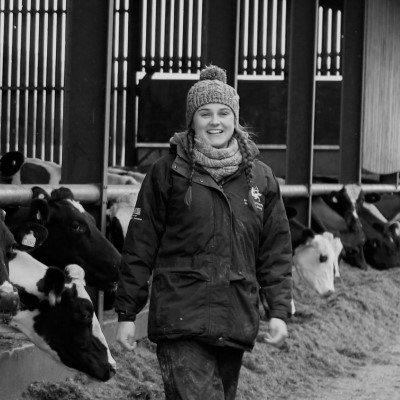CIEL | Blog: Net Zero & Livestock – Exploring the farmer options
Phil Bicknell

There are a raft of pressures facing the agrifood sector right now…big changes in policy, prices… and key sustainability challenges that aren’t going away.
Net zero is a core area of work for CIEL. It’s the golden thread that links several priority focus areas for the livestock supply chain – feed and nutrition, animal health, welfare and resource efficiency.
It’s also an area where there is a phenomenal amount of research taking place – the vast majority of the 26 sites CIEL has invested in new agri-research capability will have methane and carbon-related projects taking place at any one point this year.
It’s vital that this research pipeline continues: CIEL’s first industry report ‘Net Zero Carbon & UK Livestock’, published in 2020, highlighted that even if we see broad uptake of the technologies available to us right now, we don’t even get halfway to the 2050 net zero ambition. More broadly, that work established benchmarks for a range of farming systems across the main livestock types in the UK.
CIEL has since followed up this earlier work with a new report that looks at a wide range of options that can help reduce emissions at farm level.
This latest report, ‘Net Zero & Livestock: How farmers can reduce emissions’, identifies that greenhouse gas emissions could be reduced from the main livestock types by 23% and ammonia emissions by 15% if wide scale and highly effective mitigations are adopted across UK farms.
It’s believed to be the first of its kind to model and collate data at this scale and covers a range of mitigating scenarios in real life case studies across dairy, beef, sheep, pig and poultry farms.
The report aims to provide farmers, advisers, supply chain partners and policymakers with the information needed to support evidence-based decision making when it comes to farming in a net zero world.
This independent evidence basis is important. Agriculture, and particularly livestock production, is not short of rhetoric and opinion when it comes to our environmental impact. But decisions – whether they’re policy, commercial or practical – must be based on evidence. This work confirms change is required if we’re to meet the industry ambitions for net zero.
The report focusses on positive, practical solutions for the industry over headline categories. The need for improvement in herd or flock production efficiency is one key area highlighted that should be the focus for most farmers in the drive to reduce their carbon footprint. With input costs being top of mind for many in our industry, the potential efficiencies around feed, forage and nutrient management are particularly pertinent. Also highlighted is the importance of new technologies and need for wide-scale adoption to reduce emissions further.
There’s obviously a range of businesses with different systems, operating in different geographies, and with different challenges. A single template isn’t going to work for individual farm businesses, but we all have options available.









